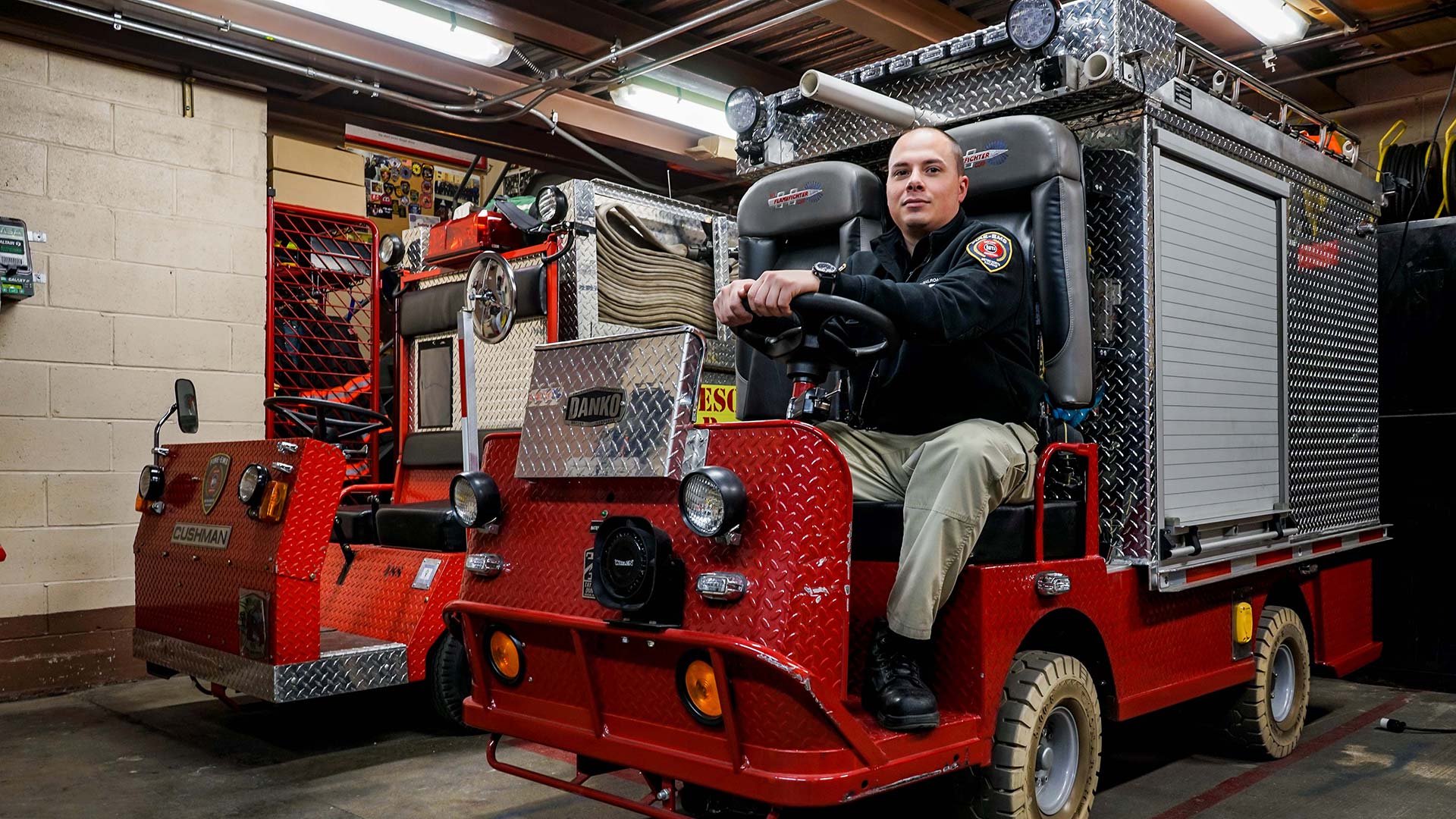

Nestled in a small garage on Track 15 stands a team of highly trained firefighter-EMTs ready to respond to the emergencies of the world’s biggest train terminal.
With over 750,000 people passing through Grand Central Terminal every day, the Grand Central Fire Brigade shoulders a lot of responsibility. Formed in the mid-Eighties, the brigade has proven time and again that it can stabilize an emergency in less time than an outside department due to its specialized training set and central location. In addition to responding to emergencies, the brigade also plays an active role in preventing conflagrations by conducting daily safety checks of the platforms, hallways, stores and restaurants.

As Grand Central continues to grow, so does the Fire Brigade’s call volume, averaging 120 calls per month. The brigade experiences a wide variety of emergency situations from heart attacks to, yes, fires. Since the firefighter-EMTs are specially trained to handle emergencies within the confines of the terminal, they are able to quickly render aid and resolve emergencies within minutes of a report. However, when additional resources are needed, the FDNY is called in and the GCFB Captains help acclimate the outside firefighters to the inner workings of the terminal.

In order to properly protect the 49 acres Grand Central encompasses, The GCFB utilizes three high-tech Taylor-Dunn B-248 carts loaded to the brim with life-saving equipment. But unlike other emergency units, these specialized vehicles are not much bigger than a golf cart. In addition, these compact units are 100-percent electric and utilize regenerative braking…just like your Tesla Model S P90D.
2013 Taylor-Dunn/Danko Rescue

Utilizing a Taylor-Dunn B-248 electric chassis and a DANKO storage unit, the GCFB rescue carries high-volume fans, extrication tools, a stokes basket and much more. The rescue was specially designed by Grand Central Fire Brigade’s Assistant Fire Chief to work seamlessly within the confines of the terminal.
Taylor-Dunn Pumper/Engine

Just like the fire trucks you’d see barreling down Fifth Avenue, the Pumper is designed to regulate water output for the firefighters.
2014 Taylor-Dunn/Danko Ambulance

Using the same chassis as the Rescue, the Fire Brigade’s ambulance has everything a full-size part 800 ambulance requires, but in less than half the space. With the majority of the GCFB’s calls being medical emergencies, this vehicle is used with the greatest frequency. Designed to quickly bring EMTs to guests in distress, the ambulance carries a stair chair and a full-size stretcher to quickly extricate the patient for transport to the hospital.
Stair Chair

Designed to easily transport a patient to an awaiting ambulance, stair chairs are perfect for the many staircases and tricky spaces of Grand Central Terminal. Rather than straining their backs lifting a patient, GCFB members take advantage of the Ferno stair chair’s track system for a smooth and easy decent down stairs.
State-of-the-art AEDs

Designed to return someone’s heart to a normal sinus rhythm when the patient is in viable cardiac arrest, AEDs can be the bridge between life and death. AEDs are strategically placed throughout Grand Central Terminal.
Thermal Imaging Cameras

Using—you guessed it—thermal imaging, these high-tech cameras can quickly find hotspots and identify the source of a fire behind a wall or thick cloud of smoke. In addition to hunting down that pesky flame, thermal imaging cameras can be used to find someone when visibility is low thanks to the camera’s ability to register body heat.
2.5-inch Hose

The GCFB rarely needs anything larger than a 2.5-inch line for the fires it encounters. Although track fires require chemical retardants due to their electrical nature, fires in the main concourse and the attached retail/restaurant areas would be combatted with water.
Stokes Basket

Designed to extricate patients from precarious positions like confined spaces or tracks, the stokes basket is a necessary tool in the Grand Central Fire Brigade’s arsenal of gear.
Bunker Gear

No one wants to go into a fire without proper protective gear. Fortunately, the firefighters with the GCFB are outfitted with the latest bunker garb to ensure they don’t become victims themselves.
Self Containing Breathing Apparatus (SCBA)

To prevent noxious fume inhalation, each member of the GCFB is outfitted with an SCBA to ensure a ready supply of clean air during a prolonged incident.